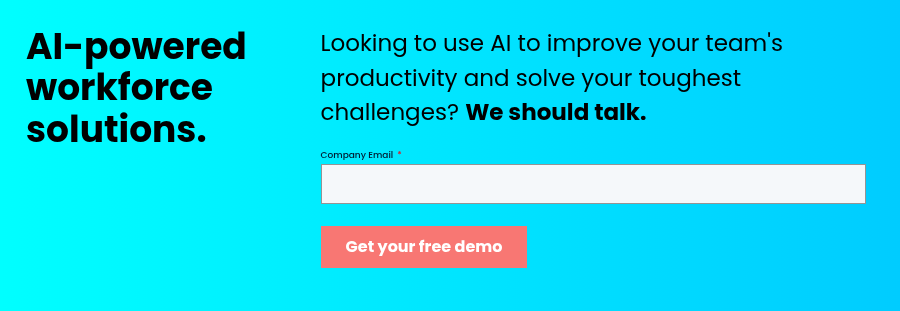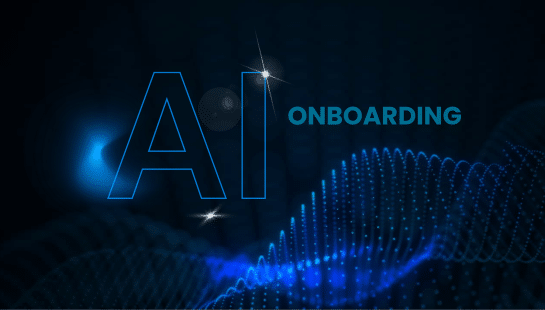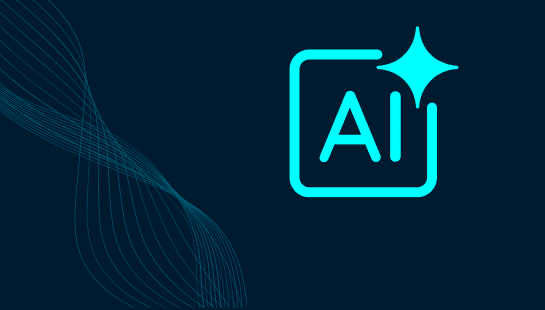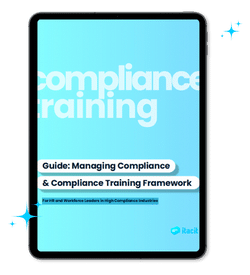AI is revolutionizing the way companies welcome new team members. About 45% of HR professionals already use AI-driven onboarding systems. Another 25% plan to adopt this technology in 2024. The numbers tell a compelling story. Companies that use AI cut their onboarding times by up to 53%. They also save more than $18,000 each year by reducing administrative work.
The benefits of AI onboarding go well beyond just saving time and money. New employees become fully productive 50% faster when AI assists their onboarding. These employees are 30% more likely to stay with the company during their first year compared to traditional onboarding methods. On top of that, companies with reliable AI onboarding systems see an 82% boost in new hire retention. These results make a strong case to adopt technology-enhanced welcome programs.
AI delivers these impressive outcomes by handling routine tasks like completing forms and answering policy questions. This gives HR teams more time to build meaningful relationships with new hires. The system creates individual-specific learning paths that match each person’s needs and learning speed. New team members immerse themselves in the company’s culture from their very first day. What used to be paperwork has become an engaging experience that makes new employees feel valued and connected right away.
The current state of employee onboarding
Employee onboarding plays a vital role in hiring but many companies overlook it. Companies struggle to create onboarding that welcomes new hires and sets them up to succeed. New employees who started in the last six months show 21% lower intent to stay compared to those past their half-year mark.
Common onboarding challenges in 2025
The numbers tell a clear story about onboarding in 2025. Poor onboarding leads to 20% of employees leaving within their first 45 days. New hires make up their minds about job fit in just one month, with 70% deciding during this time.
Here are the main challenges new hires face:
- Information overload: Workers now need to learn 11 apps on average (up from 6 in 2019). Nearly half of digital workers can’t find the information they need to do their jobs.
- Administrative burden: Most new hires (52%) spend too much time on paperwork instead of learning their role and building relationships.
- Lack of human connection: About one-third of new employees say they didn’t get enough face-time during onboarding, which they need to build workplace relationships.
- Self-discovery of responsibilities: Many new hires (39%) had to figure out their job duties on their own, which left them feeling uncertain and anxious.
The stakes are high – 80% of poorly trained employees plan to quit. Replacing them costs companies between half to double their yearly salary.
Why traditional methods fall short
Traditional onboarding still works, but it’s designed for an outdated workplace. The old approach assumed new hires would learn gradually in a predictable environment. Today’s workplace looks completely different.
HR teams often dump too much information on new hires at once. Studies show people learn better when training comes in smaller chunks. Yet many companies stick to one-time onboarding sessions that leave 40% of new hires feeling unprepared.
Old-school onboarding moves too slowly. Companies using traditional methods take up to 90 days to complete the process. That’s far too long in today’s ever-changing business world. Regular training methods also take 30% longer than modern tech-based approaches.
Paper and email-based systems create many problems – missing signatures, lost documents, buried emails. These issues frustrate both HR teams and new hires. Different departments like HR, IT, and payroll work separately, which means requests often get lost between teams.
The need for scalable, personalized solutions
The hiring world has changed dramatically. Today’s employees want:
- Everything from ID checks to training on their phones
- Simple compliance steps without endless paperwork
- Quick processes, especially in healthcare, staffing, and retail
- Engaging experiences that make them want to stay
Companies can’t risk losing good candidates because of bad onboarding in today’s competitive market. Good onboarding boosts new hire retention by 82% and productivity by over 70%. Companies that do onboarding right are 8.5 times more likely to have employees who value HR’s work.
Small fixes or hiring more people won’t solve these problems. Growing companies need to completely change how they handle onboarding – from manual to automated, static to dynamic, and one-size-fits-all to personalized.
How AI is transforming onboarding workflows
HR teams used to face mountains of tedious manual work during onboarding. AI now transforms these processes. What was once a paperwork marathon has become a simplified process that works better for new hires and HR professionals.
Automating repetitive HR tasks
AI handles the mundane tasks that usually take up HR’s valuable time. Forbes reports that AI now manages many onboarding tasks that once needed extensive human input:
- Digitally generating and managing paperwork
- Automatically sending timed messages to employees
- Using chatbots to gather feedback and answer common questions
- Analyzing new hire progress and performance
- Monitoring compliance with mandatory training
- Compiling reports on onboarding trends
AI’s capabilities extend to content creation. After receiving brand guidelines, AI takes care of creating consistent onboarding materials that comply with your standards. New hires receive similar high-quality information no matter when they start.
New team members can now practice their skills through AI-powered interactive training simulations. They can handle various scenarios from day one without worrying about mistakes with real clients or tasks.
Reducing onboarding time and errors
Numbers prove AI’s effect on efficiency. Companies that use AI-powered onboarding see their process speed up by 53%. AI also cuts errors in employee data collection by 73%, building a more reliable foundation for a new hire’s growth.
Hitachi’s AI-driven onboarding solutions cut their onboarding time by four days. HR involvement dropped from 20 hours to just 12 per new hire. Texans Credit Union now grants system access in under a minute using robotic process automation, down from 15-20 minutes.
These improvements translate to financial gains. Organizations save over $18,000 annually by using AI for onboarding to reduce administrative inefficiencies. AI can spot disengagement risks with 95% accuracy, helping teams address potential problems before they cause costly turnover.
Freeing HR to focus on people, not paperwork
AI’s most important benefit transforms HR professionals’ role. Teams can focus on strategy, culture, and engagement while AI handles routine tasks. IBM’s “Ask HR” platform already automates hundreds of roles that previously answered common questions.
This change occurs as AI manages previously incompatible software and systems. About 5,700 pieces of payroll and HR software exist, all but one of these systems don’t integrate naturally. AI offers the perfect solution to coordinate these disconnected systems.
HR professionals can now create meaningful welcome experiences. They lead team-building activities and conduct in-person check-ins instead of spending hours on paperwork. They help build human connections that matter most. In fact, 52% of companies combine their AI-assisted onboarding with personal follow-ups or orientations to keep the human element.
Personalized learning paths for every new hire
The era of generic onboarding is over. Modern AI-powered systems create custom learning experiences that align with each new hire’s role, skills, and learning style. Companies that customize their onboarding process see 32% higher employee satisfaction.
Role-based content delivery
AI systems now separate what different team members need to know. Let’s look at a technology company hiring two developers with different experience levels. Through role-based content delivery, AI creates custom paths. The junior developer gets fundamental training while the senior developer moves directly to advanced concepts.
This approach makes sense because:
- Different positions need specific skill sets and knowledge bases
- Department goals and priorities shape what information matters most
- Individual learning styles affect how information sticks
AI systems analyze job requirements and hiring patterns to build custom content libraries for each position. A healthcare organization found that customizing onboarding paths based on department-specific needs reduced information overload by 43%.
Adaptive learning modules and nudges
Adaptive learning algorithms create customized experiences by adjusting to each learner’s performance. These systems:
- Modify content difficulty based on assessment results
- Adjust learning pace according to progress speed
- Recommend supplemental materials for challenging areas
- Skip ahead when mastery is shown
Here’s how this works. A new hire who excels in compliance training gets more challenging material automatically. If they struggle with a technical concept, the AI offers extra explanations and practice opportunities.
These adaptive algorithms analyze response patterns, progress rates, and engagement metrics. As a result, 76% of new hires using adaptive learning systems feel more confident in their abilities after onboarding.
Real-time feedback and progress tracking
Immediate feedback might be the most valuable aspect of AI-powered learning paths. Traditional onboarding leaves employees waiting days or weeks to know their progress.
Immediate feedback changes this dynamic by:
- Correcting mistakes instantly
- Celebrating wins right after accomplishments
- Spotting potential knowledge gaps early
- Adjusting content based on performance patterns
This quick response prevents errors from becoming habits while building confidence. Companies using immediate feedback in their onboarding report 27% faster skill acquisition.
Progress tracking dashboards show both employees and managers the onboarding progress. These analytics highlight strengths, spot areas needing support, and predict challenges, all during onboarding, not after it’s too late to make changes.
Managers get great insights from these tools. They can see exactly where a new hire struggles instead of guessing. This leads to targeted coaching conversations rather than generic check-ins. HR teams also spot common challenges across multiple hires, which helps improve the entire onboarding process.
Companies often find that analyzing feedback during onboarding helps them make adjustments that improve the experience for future hires by a lot. Each new group benefits from lessons learned from previous ones.
The result? Employees feel supported throughout their experience while companies learn how to make each hire more successful than the last.
Boosting engagement and cultural integration
Cultural integration begins before new hires start their first day. AI technology will play a vital role in making this process meaningful by 2025, as workplace models continue to evolve. The right early interactions can transform a simple form-filler into an active team member.
AI-curated Day 1 experiences
First impressions can make or break the onboarding experience. AI systems now create individual welcome experiences that connect new hires to your company’s mission and values right away. These platforms automatically create a “Day 1 Digest” with tailored content about company mission, core values, team introductions, and role-specific logistics based on each employee’s location.
This personalization does more than just add names to templates. New employees understand how their work fits into the bigger company vision without hearing empty corporate speak that usually misses the mark.
Inclusive onboarding for remote and hybrid teams
Onboarding now happens both virtually and in-person – often mixing both approaches. This new reality creates fresh challenges in keeping cultural consistency.
Microsoft’s research shows compelling results: new employees are 3.5 times more likely to feel satisfied with their experience when managers take part in onboarding. These employees also feel 1.2 times more confident about their meaningful contributions to team success.
Remote workers often struggle to connect with colleagues. Research indicates employees who build close relationships with co-workers are 50% more satisfied. Good AI onboarding systems help by:
- Setting up virtual meet-and-greets across departments
- Matching new hires with onboarding buddies
- Creating digital spaces for casual interaction
- Supporting structured one-on-one sessions
The buddy system shows remarkable results. New hires who met their onboarding buddy at least once in their first 90 days became productive faster – 56% reported this improvement. The numbers get better with more meetings: 73% with 2-3 meetings, 86% with 4-8 meetings, and 97% for those meeting more than eight times.
AI helps distributed teams stay inclusive by delivering consistent experiences to everyone. The systems adapt content for cultural differences, making global onboarding feel personal and relevant.
Optimizing communication timing for better impact
Sending information at the right time helps new hires remember it better. 39% of workers say they get messages at bad times. AI fixes this by studying engagement patterns to find the best timing for communications.
AI predicts when different types of workers will be most receptive based on their past behavior. Office staff might get updates in the morning, while frontline workers receive notifications during their shift. Global teams can get end-of-day summaries.
This precise timing works for cultural communications too. AI finds the perfect moments to share company stories, values, and mission-related content. These targeted messages create stronger connections than regular scheduled updates.
Companies using AI-optimized communication timing report that employees feel more welcome and invested from day one. This matters because 58% of remote employees find it hard to fit into workplace culture. Well-timed messages help bridge the gap between isolated workers and your organization’s values.
AI acts as an invisible thread that keeps your culture connected as teams spread across different locations and time zones.
Real-time analytics and predictive insights
Companies today just need more than gut feeling, they need data. Smart companies track how new hires integrate using AI-powered analytics. This gives them clear insights into what works and what doesn’t.
Engagement dashboards for HR and managers
AI-powered analytics have changed how HR teams and managers understand the onboarding experience. Interactive dashboards show key metrics like module completion rates, time spent on content, and employee sentiment from surveys and behavior patterns. Your team can spot engagement trends right away instead of waiting weeks to find problems.
These dashboards remove the gap between data and action. To cite an instance, HR professionals can check open rates, click-throughs, and content priorities as they happen. They can then adjust delivery timing and format. This quick feedback helps keep materials relevant and interesting for new team members.
The best dashboards include:
- Engagement scores that show employee connection levels
- Survey participation rates showing data quality
- Employee satisfaction metrics that reveal problem areas
- Net Promoter Scores that show likelihood to recommend the company
These tools help match perception with reality. Manager dashboards highlight which new hires lag behind on milestones or report low satisfaction. Managers can schedule timely check-ins and use resources better to boost new employee confidence.
Early warning systems for disengagement
Disengagement takes time to develop. AI algorithms now analyze new hire behavior, communication, and feedback patterns to find at-risk employees before issues grow. These warning systems work like a risk radar and catch subtle changes that humans might miss.
Catching disengagement early brings real business value. Companies with highly engaged teams show 23% higher profitability and 81% lower absenteeism than others. Predictive analytics help maintain these benefits by tackling concerns quickly.
Weave showed how valuable this approach can be with AI analytics to track team sentiment. They looked at pulse surveys and internal communications to spot early signs of disengagement. The results were impressive, a 95% increase in employee Net Promoter Score after they started using it.
Common warning signs include missed deadlines, less participation in team activities, and fewer attempts to solve problems. These signs become harder to notice through casual observation in hybrid workplaces, which makes AI detection more valuable.
Continuous improvement through data
AI does more than measure, it guides improvement. Organizations create a feedback loop by tracking engagement metrics during onboarding. This helps refine the process as the organization changes.
AI analytics also find links between onboarding practices and long-term results. By combining data from surveys, performance reviews, and engagement metrics, AI shows which onboarding elements help keep employees and boost productivity.
AI’s power lies in predicting which changes will work best. You won’t need to guess what might help, you’ll know which adjustments will likely improve new hire satisfaction and performance. Each version of your onboarding process gets better than the last.
Ensuring ethical, secure, and compliant AI use
AI brings remarkable advantages to employee onboarding, but using it responsibly needs careful attention to ethics and security. Every algorithm raises critical questions about data usage, fairness, and regulatory adherence that affect both your organization and new hires.
Data privacy and consent management
Privacy concerns top the list of AI ethics issues in the workplace. Organizations using AI onboarding must strike a balance between being helpful and avoiding privacy invasions. Clear policies about data collection and usage build trust and protect everyone’s interests.
Three foundations support effective data privacy in AI onboarding:
- Explicit consent – Organizations must get clear permission from candidates about how they’ll use personal data
- Transparency – New hires should know AI’s role in their onboarding process
- Security – State-of-the-art protection measures like encryption and secure storage protect sensitive information
The stakes run high, onboarding systems that process personal details from contact information to behavioral signals could easily breach privacy regulations without proper oversight. You can minimize risks by collecting only essential information for the hiring process. This approach satisfies regulatory requirements and reduces potential vulnerabilities.
Bias mitigation in AI recommendations
AI systems learn from historical data and might unintentionally carry forward societal biases, which could create unfair outcomes for underrepresented groups. This becomes a bigger concern with individual-specific learning paths or performance predictions during onboarding.
To curb bias, ethical AI onboarding tools need:
- Regular algorithmic audits to verify job-relevant data-based recommendations only
- Diverse training datasets that represent all potential employees
- Human oversight throughout the onboarding process
It’s worth mentioning that AI works best alongside human judgment rather than replacing it. Harvard Business Review experts point out that humans must train machines, explain outcomes, and maintain responsible usage. This partnership reduces compliance risks while making the process more efficient and consistent.
Compliance with global standards (e.g., GDPR, SOC 2)
Meeting regulatory requirements isn’t optional, it protects both your organization and new employees. The General Data Protection Regulation (GDPR) in Europe and California Consumer Privacy Act (CCPA) in the US set strict guidelines for handling personal information.
SOC 2 compliance shows that your AI platform maintains effective controls to protect data security, availability, processing integrity, confidentiality, and privacy. This third-party validation proves valuable with sensitive onboarding information.
Following compliance standards creates several benefits beyond avoiding penalties:
- Risk mitigation – SOC 2 controls help prevent data breaches, system downtime, and processing errors
- Trust building – Proven compliance improves employer branding
- Operational excellence – Regular audits lead to better security practices
A proactive approach to these considerations will help you create an onboarding system that delivers efficiency and personalization while upholding the highest standards of ethics and compliance.
Case study: How iTacit’s AI HR Assistant enhances onboarding
iTacit’s AI HR Assistant exemplifies how artificial intelligence transforms onboarding experiences. This case study shows how organizations use these technologies to tackle everyday HR challenges.
Overview of iTacit’s AI onboarding features
iTacit’s AI HR Assistant solves onboarding challenges through several key features. The system automates document workflows and cuts paperwork processing time by 70% compared to manual methods. Each employee gets a tailored learning path that adapts to their role requirements and progress.
The system’s communication capabilities make it unique. Unlike basic platforms, the AI assistant:
- Answers common questions from new hires around the clock
- Schedules check-ins at key onboarding milestones automatically
- Delivers training materials right when employees need them
- Tracks compliance completion and sends friendly reminders before deadlines
HR teams can see onboarding progress across the organization through the analytics dashboard. They quickly spot bottlenecks or engagement issues that might affect retention.
Real-life results from healthcare and frontline teams
Healthcare organizations using iTacit’s AI-capable employee onboarding solution show remarkable results. New nurses at one hospital network reached full productivity 35% faster with the AI-powered system. The administrative costs of onboarding dropped 28% in just one year.
Frontline teams achieved similar success. A retail chain struggling with high turnover improved its first-month retention by 42% after using the platform. Employee satisfaction during onboarding rose dramatically from 61% to 89%.
Managers now spend 60% less time answering basic questions from new hires. This lets them focus on meaningful mentorship instead of explaining administrative details.
Why AI assistants are the future of HR support
AI assistants like iTacit’s aren’t just another trend, they solve core problems in traditional HR approaches. Most HR professionals (73%) spend too much time on administrative tasks. AI assistance creates room to build strategic human connections.
Traditional onboarding methods fall short as workforces become more distributed and diverse. AI adapts to each person’s needs while keeping consistency across locations and roles.
The financial benefits are clear. Companies using iTacit’s AI assistant typically recover their investment within 6-9 months through reduced administration costs, faster productivity, and better retention.
Modern employees expect digital-first experiences. AI assistants provide the tailored, responsive support they need from their first day.
Steps to implement AI in your onboarding process
A well-laid-out approach is essential to succeed with AI implementation. You need clear steps to get the most out of AI in employee onboarding and reduce risks as you move from theory to practice.
Audit your current onboarding workflow
Start by creating a map of your onboarding trip from the moment an employee accepts the offer until they become productive. Document each step, system, tool, and approval needed. The actual experience matters more than assumptions about what happens. Look for spots where new hires get stuck, face delays, or where departments fail to communicate. Measure how long each process takes to find hidden problems. This audit shows what works, what doesn’t, and where AI can make the biggest difference.
Define success metrics and KPIs
Set standards to assess how well your AI onboarding works:
- Time-to-Productivity: Keep track of the time new hires take to reach expected performance levels
- Retention Threshold: Find out when employees leave (like 50% quitting within first 90 days)
- Training Completion Rate: Calculate the percentage of new hires who finish their training
- New-Hire Surveys: Get feedback throughout their first year
Pick metrics that line up with your organization’s goals – they will help you measure improvements.
Start with a pilot program
Instead of changing everything at once, run a test with one department or location. This method limits financial risk and gives you real information about AI’s effect in your workplace. Pick a group that has struggled with onboarding or has managers who want to adopt new ideas.
Iterate based on analytics and feedback
Live data helps you fine-tune your AI onboarding process. Get explanations through surveys, interviews, and performance metrics from new employees and their managers. Watch if employees can do their tasks and feel comfortable asking questions. This feedback turns onboarding from a fixed process into one that grows with your needs.
Conclusion
AI-powered onboarding marks a transformation in talent integration strategies. This piece shows how AI changes a paperwork-heavy process into a strategic advantage that boosts business results. The data tells a compelling story – companies that use AI technologies cut onboarding times by up to 53% and save over $18,000 yearly.
AI creates individual-specific experiences that make new employees feel valued immediately. Learning paths adapt to each person’s role, skills, and pace, which speeds up productivity by a lot. Up-to-the-minute feedback systems detect issues early, which helps tackle the worrying fact that 20% of employees leave within their first 45 days.
AI onboarding shines through its blend of automation and human connection. While AI handles routine administrative work, it creates more opportunities for meaningful team interactions. This explains why companies with AI-powered onboarding see 82% better retention rates.
Ethical guidelines must steer AI implementation. Data privacy, bias mitigation, and regulatory compliance create the foundation for responsible AI use. Without proper safeguards, even advanced systems might damage trust instead of building it.
A pilot program helps prove value before expanding company-wide. Measurable improvements in productivity, involvement, and retention build momentum for wider adoption. Success depends on clear metrics and continuous improvements based on feedback.
Solutions like iTacit’s AI HR Assistant show how technology turns onboarding from a burden into an advantage. These adaptive systems provide consistent experiences while meeting individual needs in today’s distributed and diverse workforce.
Your onboarding system doesn’t need an immediate complete overhaul. Begin by spotting the most time-consuming or error-prone areas in your current process. Even small AI applications can lead to major improvements while supporting the case for broader implementation.
Employee onboarding’s future is here now. Organizations that adopt these tools today will lead in attracting, involving, and keeping top talent tomorrow.










